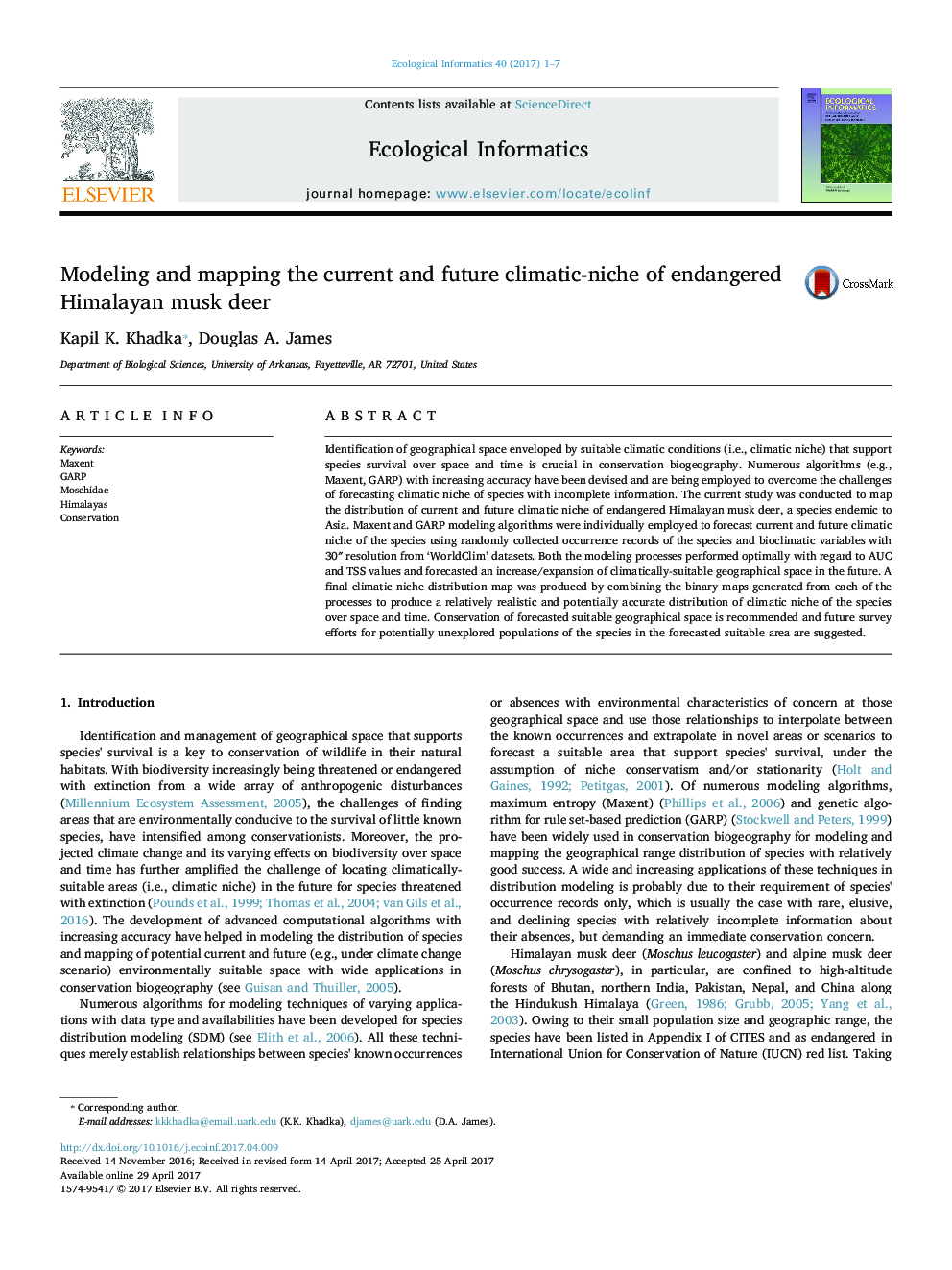| Article ID | Journal | Published Year | Pages | File Type |
|---|---|---|---|---|
| 5741894 | Ecological Informatics | 2017 | 7 Pages |
â¢Identification of climatically-suitable area for species is crucial in conservation biology.â¢Maxent and GARP were employed for modeling.â¢Composite maps were produced by combining binary maps from each algorithm.â¢By doing so, it is expected that the produced maps are relatively accurate.
Identification of geographical space enveloped by suitable climatic conditions (i.e., climatic niche) that support species survival over space and time is crucial in conservation biogeography. Numerous algorithms (e.g., Maxent, GARP) with increasing accuracy have been devised and are being employed to overcome the challenges of forecasting climatic niche of species with incomplete information. The current study was conducted to map the distribution of current and future climatic niche of endangered Himalayan musk deer, a species endemic to Asia. Maxent and GARP modeling algorithms were individually employed to forecast current and future climatic niche of the species using randomly collected occurrence records of the species and bioclimatic variables with 30â³ resolution from 'WorldClim' datasets. Both the modeling processes performed optimally with regard to AUC and TSS values and forecasted an increase/expansion of climatically-suitable geographical space in the future. A final climatic niche distribution map was produced by combining the binary maps generated from each of the processes to produce a relatively realistic and potentially accurate distribution of climatic niche of the species over space and time. Conservation of forecasted suitable geographical space is recommended and future survey efforts for potentially unexplored populations of the species in the forecasted suitable area are suggested.
